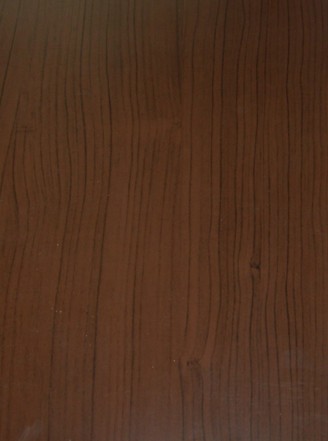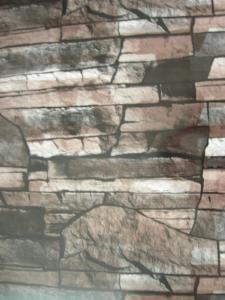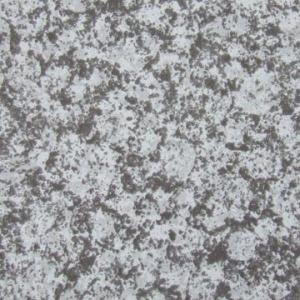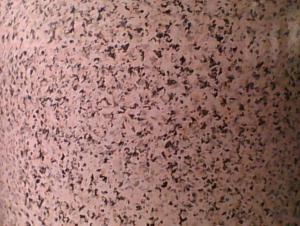Pre-painted Galvanized Steel Coil-JIS G 3312-wooden pattern8
- Loading Port:
- Shanghai
- Payment Terms:
- TT OR LC
- Min Order Qty:
- -
- Supply Capability:
- 4000吨 m.t./month
OKorder Service Pledge
OKorder Financial Service
You Might Also Like
Pre-painted Galvanized Steel Coils/ PPGI/GI
I Specifications:
1.Thickness:0.16-2.0mm
2.Width:600-1500mm
3.Material: SGCC,SGCD,SECC,SECD,DX51D+Z
4.Zinc coating:40-275G/M2
5.Surface Structure: galvanized ,zero spangle, regular spangle or normal spangle
6.Surface treatment: chromated and oiled, chromated and non-oiled
7.Color:all RAL series
II Main characteristics :
1.strong corrosion resistance
2.surface quality
3.conducive to deep processing,such as the embossed PPGI,printed PPGI&punching PPGI
4.economy and practicality
III Applications:
Household Appliance:
1.Refrigerator shutter &side panels, Washer, Freezers, Air conditions,
2.Rice Cooker, Microwave Ovens, Water Heaters, Sterilization Cabinets, Range Hoods
3.Computer Panels , DVD/DVB panels, TV back panel etc.
Teaching Board: whiteboard, blackboard, green board(chalk board).
Indoor Decoration: Fireproof Door, kitchen cabinet, wall decoration.
Shipping Industries: Ship, Fecht, Marine.
Elevator/Medical Equipment/Rubbish Bin.
Thickness:0.17mm-0.8mm
Width:600mm-1250mm
Prepainted Galvanized Steel Coil
- Q: So, i recently bought the game red steel 2 and i beat it, it was an amazing game! although since i had never played the first one ( i never knew about it actually) i had alot of questions like, why was he banished, where is his actual master, etc so i searched up on Youtube, red steel 1 to figure it all out and the games look nothing alike!! i mean the first one is like nothing but guns and the characters arnt the same ( well at least i dont think so) could someone explain why?
- Well, since Red Steel was one of the games that released when the Wii came out, initially people thought it was would be amazing and bought it on impulse since there wasn't a lot of options in the beginning. Turns out that the game was extremely horrible and no one liked it. So the company who made Red Steel (sorry, I forgot their name) wanted to take a totally different approach to their next game. That's why its all different. I haven't played either game so if there were any cliffhangers in the first game unfortunately you never know what happened.
- Q: What is the minimum thickness of a steel coil?
- The minimum thickness of a steel coil can vary depending on the specific requirements and standards set by the industry. However, in general, the minimum thickness of a steel coil is typically around 0.15 millimeters or 0.006 inches.
- Q: did bible stated that steel is coming from outer space. i mean meteor rocks that enter our earth sistem contains the minerals iron.
- Steel is not elemental, if that's what you mean. It's a metal alloy, a combination of mostly iron and some carbon. Iron and carbon both occur naturally on the Earth, but you have to melt them together to make steel.
- Q: Ok, lately I've been taking to making things out of stainless steel chain mallie rings. The problem is that when i make a bracelet or something, the area around the fastener always looks pretty bad. I'm thinking to have a friend who also does chain mallie finish the weave all the way around. This would make it look good but make it impossible to remove.Are there any long term problems with stainless steel on skin? I know some metals will change the color of the skin or make the skin absorb some of the metal. Is this something to worry about with stainless steel?
- Stainless steel contains both nickel and chromium. These two alloys are responsible for most of contact dermatitis in people. Some of my co-workers making steel had such bad reactions to chromium that they had to quit their jobs. Their skin was always inflamed. People don't react to finished stainless steel the same way because the alloys are bonded tightly in the heat treating process. But if you are grinding it and getting the dust on your skin, you could get a contact dermatitis if you are sensitive. I don't think it would absorb into your blood stream or do any long term damage to your skin. If you do get a reaction, you would have to cease your exposure or in a worse case scenario risk getting a body wide reaction like my coworkers. I would not worry about any exposure making rings out of stainless steel. After all, stainless steel is used in sugical implants and most people are fine.
- Q: 2 refridgerator of similar model and same brand..one is stainless steel...the other is clear steel (cheaper)..so wat's the difference between the two?
- Stainless steel is different than regular (clear?) steel because is is an alloy, or combination, of steel and other elements. Stainles steel has 15% chromium, which is very resistant to rust than regular steel. That is why stainless is more expensive
- Q: How are steel coils used in the production of steel tanks?
- Steel coils are an essential component in the production of steel tanks. These coils, which are typically made from high-quality steel, serve as the primary raw material for manufacturing steel tanks. The first step in the process is to unroll and flatten the steel coils, which are usually delivered in a coiled form from the steel mills. Once the coils are unrolled, they are then cut into specific lengths and widths, depending on the desired dimensions of the steel tank. These cut pieces are then molded and shaped into the different components of the tank, such as the cylindrical body, the top and bottom ends, and any additional fittings or accessories. The steel coils provide the necessary strength and durability to the tank, ensuring that it can withstand the rigors of its intended application. The quality of the steel used in the coils is crucial, as it determines the tank's resistance to corrosion, pressure, and external forces. Moreover, the use of steel coils allows for efficient and cost-effective production of steel tanks. The standardized nature of the coils ensures consistent quality and dimensions, resulting in a streamlined manufacturing process. The ability to cut the coils into precise lengths and widths also minimizes wastage and maximizes material utilization. Furthermore, steel coils offer flexibility in terms of design and customization. They can be easily formed and welded into complex shapes, allowing for the creation of tanks with varying sizes, capacities, and configurations. This versatility makes steel coils an ideal choice for producing tanks for diverse sectors, including industrial, commercial, and residential applications. In summary, steel coils play a crucial role in the production of steel tanks. They provide the necessary raw material for manufacturing various tank components, ensuring strength, durability, and customization. By utilizing steel coils, manufacturers can efficiently produce high-quality tanks that meet the specific requirements of different industries.
- Q: How are steel coils used in the production of automobile frames?
- Automobile frames rely heavily on steel coils, which are indispensable for their production. These coils, crafted from top-notch steel, undergo a process of uncoiling before being fed into a stamping press, where they assume various forms, constituting parts of the frame. The presence of steel coils is crucial as they furnish the frame with the requisite strength and rigidity, ensuring it can bear the vehicle's weight and maintain structural integrity. Once shaped, the coils are frequently welded together to construct the frame structure. This welding procedure securely binds the individual components, guaranteeing that the frame can endure the forces and strains encountered during the vehicle's operation. Utilizing steel coils in the production of automobile frames also allows for design flexibility, as they can be effortlessly shaped and manipulated to fulfill specific requirements. Moreover, steel coils possess exceptional durability and corrosion resistance, rendering them ideal for automotive applications. Frames fashioned from these coils are not only robust and dependable but also capable of withstanding harsh conditions and road vibrations. This not only enhances the vehicle's safety but also contributes to its longevity and overall performance. Steel coils also find use in other critical vehicle components, including suspension systems, chassis, and body panels. Their versatility, strength, and cost-effectiveness make them a favored choice in the automotive industry. Overall, the incorporation of steel coils in automobile frame production plays a significant role in guaranteeing the safety, durability, and performance of modern vehicles.
- Q: How are steel coils used in the production of steel containers?
- Steel containers rely heavily on steel coils as a vital component in their production. These coils, made from flat-rolled steel, serve as the foundation for the container's main body. To start the process, the steel coils are unwound and fed into a rolling mill. Here, they undergo a sequence of procedures to shape and mold the steel. One of these steps involves heating the coils to a specific temperature, making them more malleable and easier to manipulate. Subsequently, the hot coils pass through a series of rollers that gradually reduce their thickness and elongate them to the desired size. This entire procedure is referred to as hot rolling. Once the steel coils have been rolled to the necessary thickness, they are then cooled and transformed into sheets. These sheets are further treated to eliminate any imperfections or irregularities, guaranteeing a smooth and even surface. This is accomplished through processes like pickling, where acid is used to remove any scale or rust, and cold rolling, where the sheets are passed through rollers at room temperature to achieve the desired thickness and surface finish. After the sheets have been cleaned and refined, they are molded into the shape of the container. This typically involves a technique known as stamping, in which hydraulic presses are used to press the steel sheets into a mold. The mold determines the container's shape and size, and the steel sheets are pressed against it with great force, resulting in the desired container shape. Once the containers have been formed, they undergo several finishing processes, including welding, painting, and coating. These processes are carried out to enhance the containers' durability, appearance, and resistance to corrosion. These final touches ensure that the steel containers meet the necessary standards and are of high quality for their intended use. In conclusion, steel coils are of paramount importance in the manufacturing of steel containers, as they provide the raw material needed for their production. Through a series of steps, the steel coils are shaped, cut, and formed into sheets, which are then further processed and molded into the desired container shape. The outcome is a robust and dependable steel container suitable for various applications across industries.
- Q: What are the environmental impacts of producing steel coils?
- The production of steel coils has several environmental impacts. The primary concern is the emission of greenhouse gases, especially carbon dioxide, during the manufacturing process. Steel production is energy-intensive and relies heavily on fossil fuels, which contribute to climate change. Additionally, the extraction and processing of raw materials, such as iron ore and coal, can lead to habitat destruction, soil erosion, and water pollution. The steel industry also generates significant amounts of waste, including slag and dust, which can have detrimental effects on ecosystems if not properly managed. Overall, the environmental impacts of producing steel coils necessitate sustainable practices to minimize emissions, conserve resources, and mitigate ecological harm.
- Q: who, when and where was dual phase steel invented?
- Looking okorder /... but I would note that this stuff seems an awful lot like the techniques that have been used for making high quality swords and cutting tools for thousands of years including the famed Damacas steel. In these, the steel is heated and slowly cooled (annealed) to produce the tough matrix, then the piece is reheated and quenched to produce the hard edge. What Dual-phase seems to do is bring the process to bulk manufacture.
Send your message to us
Pre-painted Galvanized Steel Coil-JIS G 3312-wooden pattern8
- Loading Port:
- Shanghai
- Payment Terms:
- TT OR LC
- Min Order Qty:
- -
- Supply Capability:
- 4000吨 m.t./month
OKorder Service Pledge
OKorder Financial Service
Similar products
Hot products
Hot Searches
Related keywords




























